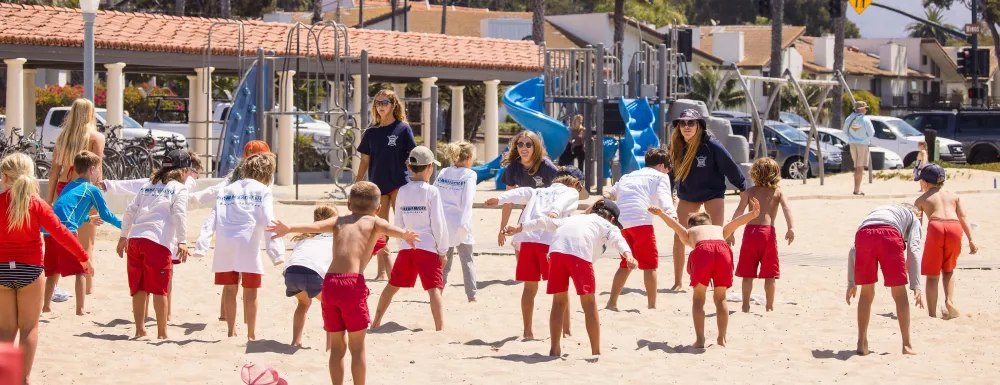
Contact
Junior Lifeguards
(805) 897-2680
JuniorLifeguards@SantaBarbaraCA.gov
Location
Junior Lifeguards
Santa Barbara Junior Lifeguards is a renowned, nationally affiliated, disciplined training program held at East Beach for over 50 years. Our instructors hold USLA Open Water Lifeguard Certifications and lead the Junior Lifeguards through games, skills, competitions, and more.
Junior Lifeguards started during World War I in Chicago. Due to financial constraints and a reduction in the numbers of regular lifeguard staff, a program was started where young men volunteered. They were offered free t-shirts and the opportunity to learn lifesaving skills and practice with lifeguard equipment. Their task was to add to the eyes of the regular lifeguards. It took several decades before this program evolved in other areas. Municipalities have learned this program produces strong lifeguard recruits and provides valuable public safety education and summer youth activity. The USLA reports that over 50,000 participants in junior lifeguard programs each year.
During the 1956 Olympic Games held in Melbourne, Australia, a group of Los Angeles County Lifeguards, who were also members of the U.S. Olympic Swimming Team, attended a surfing contest in the nearby town of Torquay. While at the contest, these visiting lifeguards were impressed by a program conducted at the Torquay Surf Lifesaving Club. That program aimed at educating and training the local youth in swimming, ocean safety, and lifesaving skills. Taking the idea back home, several of the guards organized and established a Junior Lifeguard program in Los Angeles in 1957. The program was soon copied by several other beaches in southern California and as far away as Santa Cruz.
In 1968, a Los Angeles County Lifeguard named Alex Nordholm had moved north to Carpinteria. Using knowledge from a recent trip to Australia where he observed the “Nipper” programs, he started a Junior Lifeguard program. He and fellow Carpinteria State Lifeguard John Kuizenga, started the program at Carpinteria State Beach with 25 participants the first year. By 1970, the program had doubled in size. In 1971, Mr. Nordholm and Mr. Whie moved the program to Santa Barbara and operated it out of a small office in the present day Cabrillo Pavilion. The program has been held at East Beach ever since. Due to the success of Junior Lifeguards, there are several programs offered in Santa Barbara County at Refugio State Beach, UCSB Campus Point, East Beach, Hendry’s and Carpinteria.
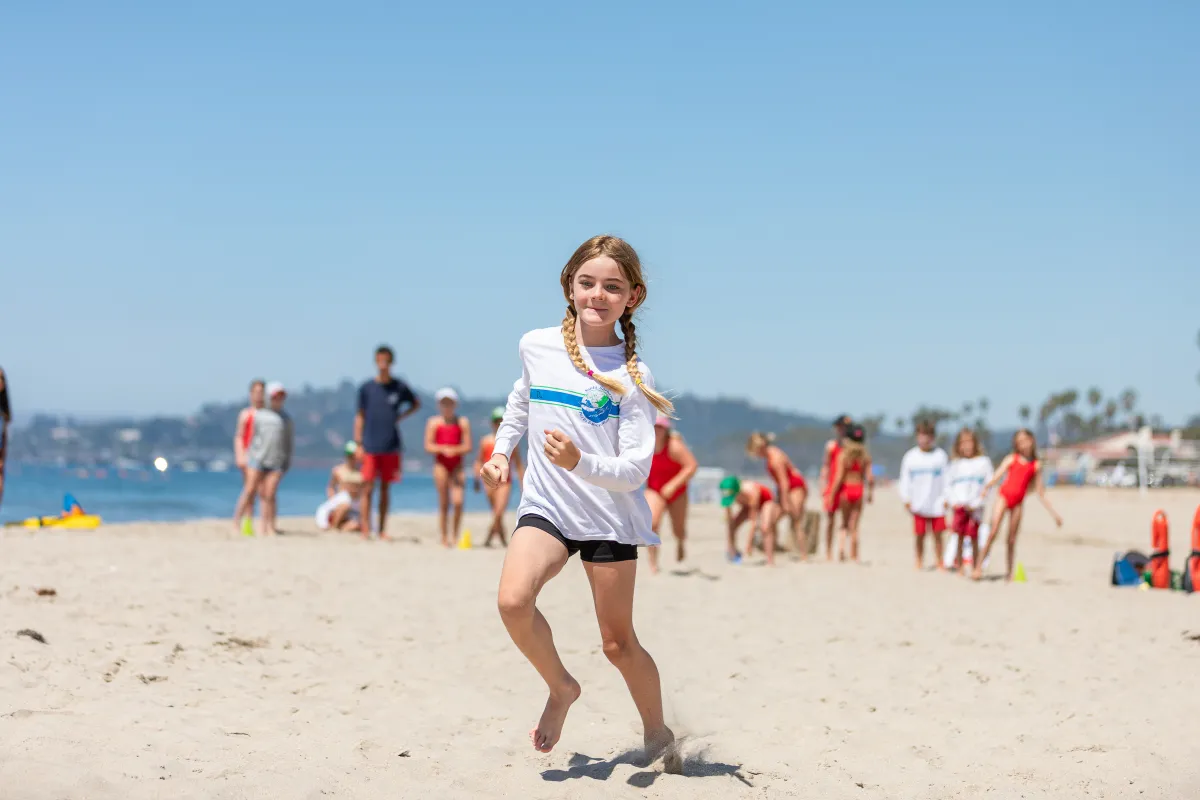

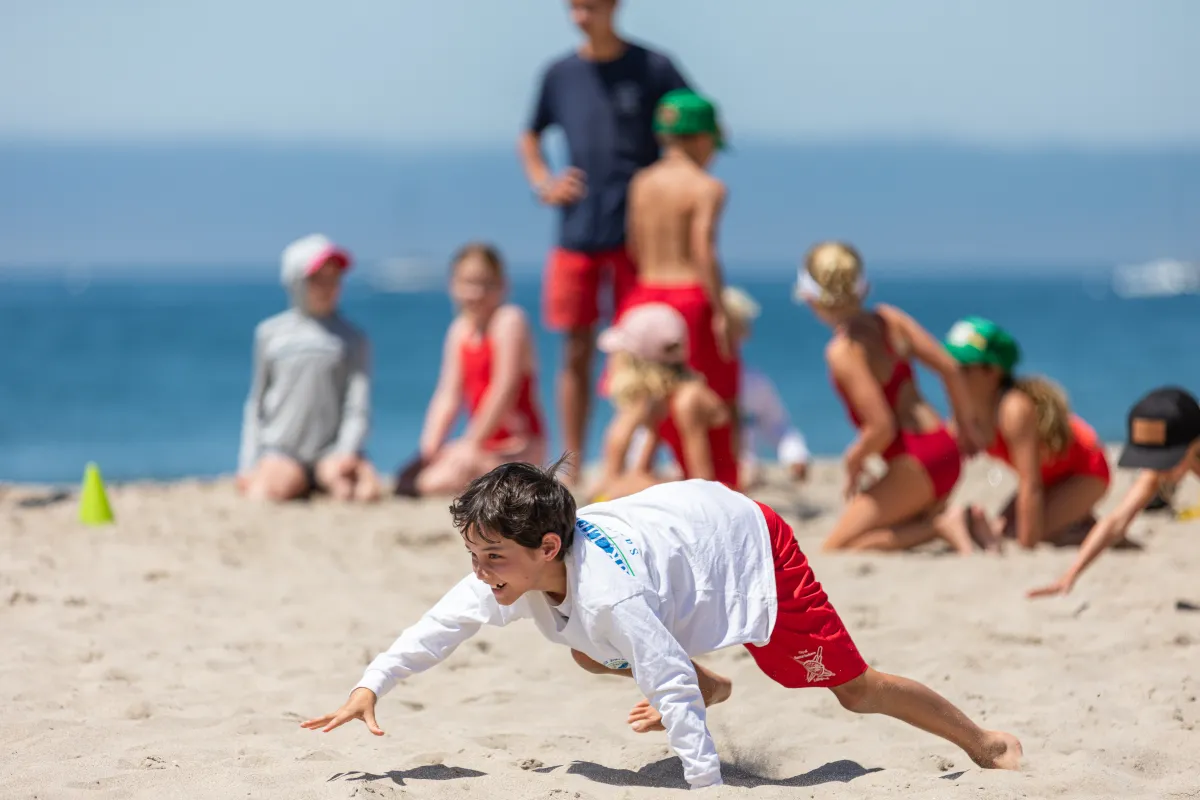
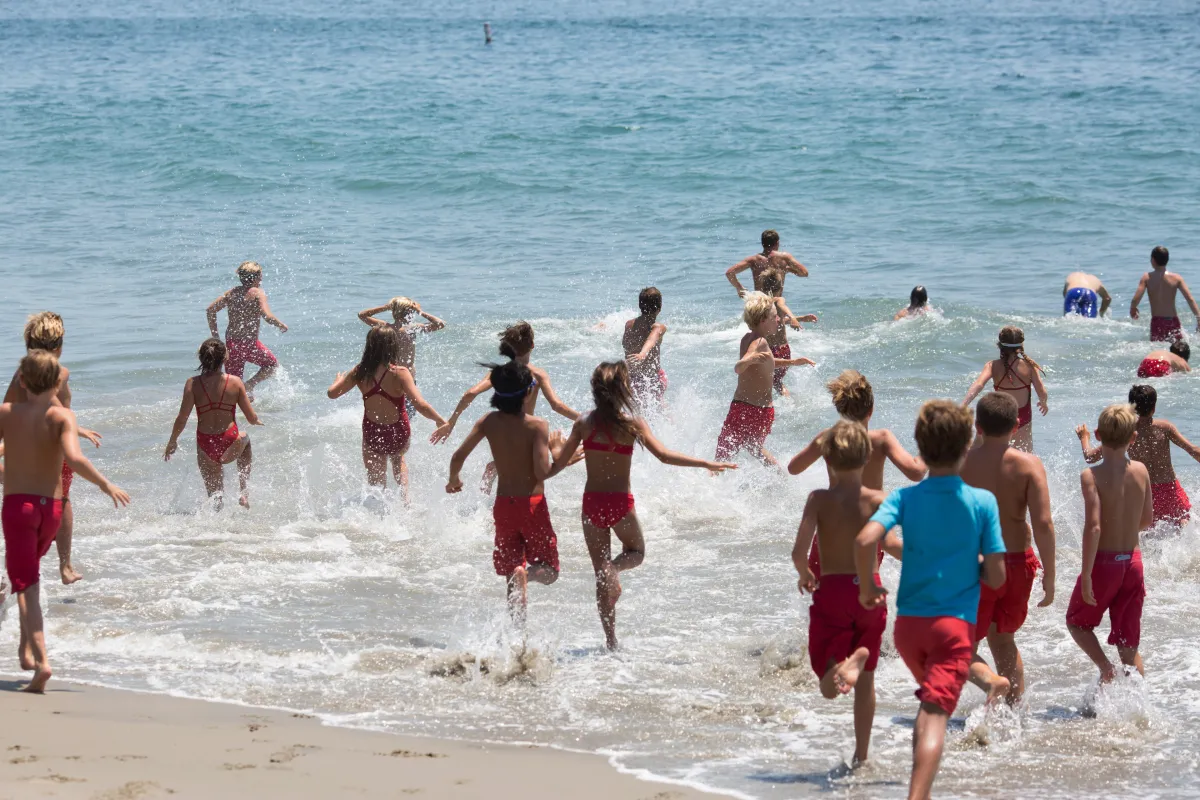
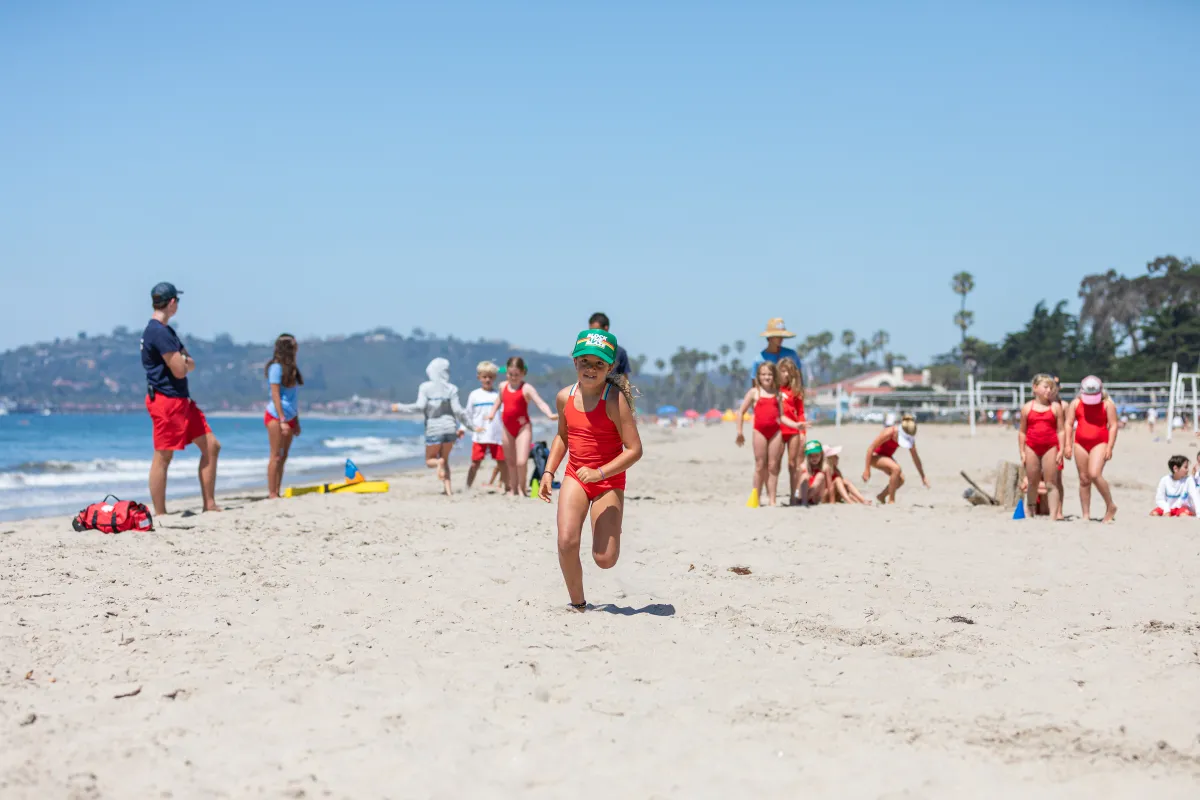
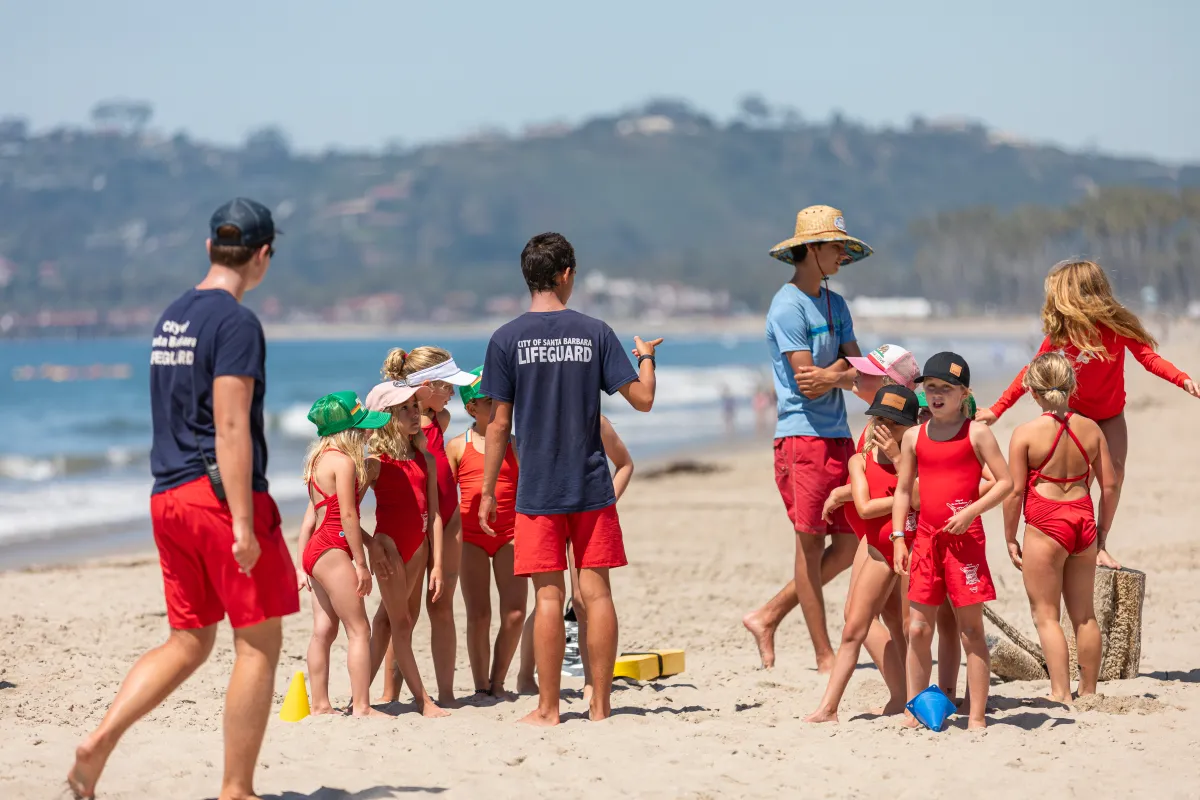
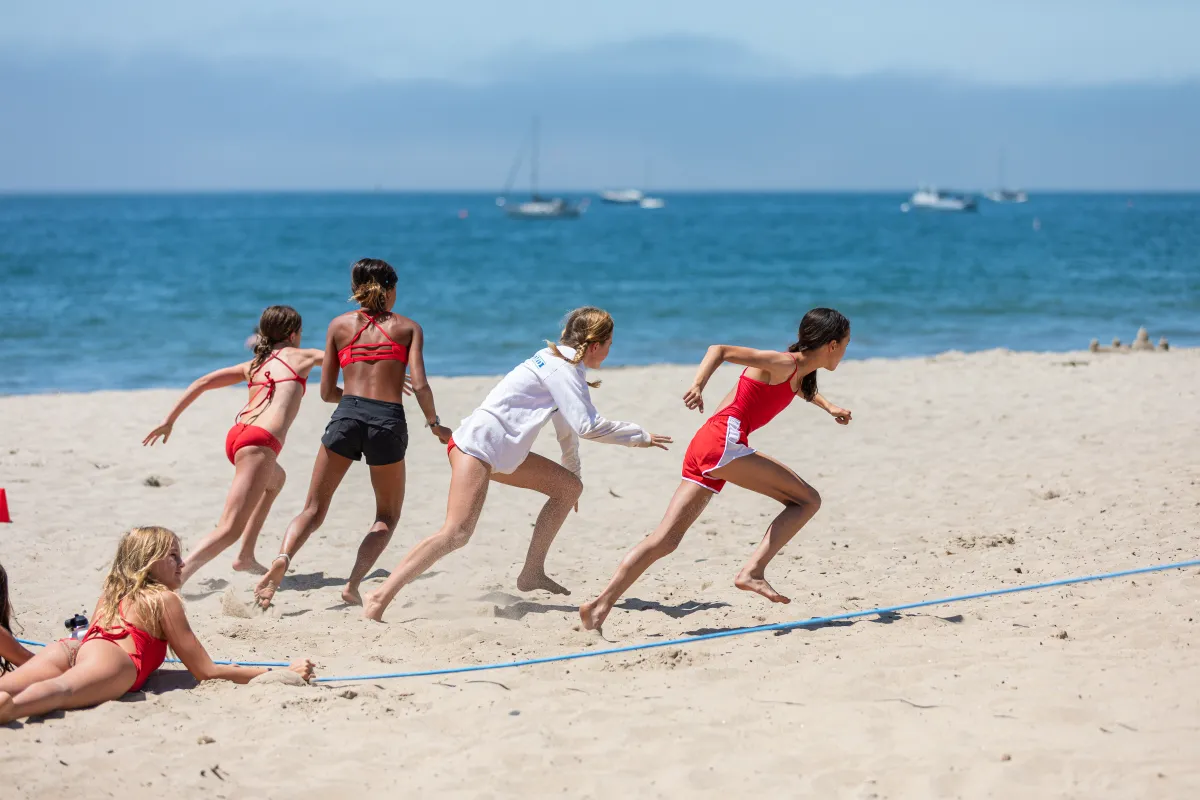
Registration
Registration for 2025 Junior Lifeguards is now closed. Stay tuned for 2026 Junior Lifeguards details!
Learn more about our registration options below and view the 2025 Junior Lifeguards Calendar.
The two-week session shows participants the highlights of Junior Lifeguards; a focused, intensive program designed to take campers from solid swimmers to legendary lifesavers. Designed to develop your camper into a well-rounded individual, Junior Lifeguards learn first aid, ocean safety, and marine awareness, as well as participate in competitions, form lasting bonds, and more. Attendance is necessary, as every day counts!
The eight-week session lasts all four sessions of Junior Lifeguards and is designed to provide a flexible and affordable option for families with multiple commitments throughout the summer. Campers that register for the 8-week session are not required to attend every week of camp. This option is perfect for Junior Lifeguards with the desire to develop alongside their peers and instructors, helping them to form strong bonds, participate in multiple competitions, learn first aid and ocean safety, and more.
The Junior Lifeguards program provides the Pre-Camp option for families who prefer the drop-off time of 9:00 AM. With the extra 1.5 hours, campers will warm up, play beach games, and prepare for the day ahead. Pre-requisites: Registration in a session of 2025 Junior Lifeguards.
The Junior Lifeguard Aide Program is a pivotal opportunity within the Santa Barbara Junior Lifeguard Program, offering participants both community service hours and practical experience in aquatic safety and supervision. Junior Lifeguard Aides actively contribute by assisting with group supervision, maintaining water safety, supporting competitions, and leading various activities and games. In addition to earning community service hours, participants can gain hands-on work experience in lifeguarding or teaching swim lessons at the city’s pools.
Steps to becoming a Junior Lifeguard Aide:
- Register for the Junior Lifeguard Aide Program and a Swim Tryout & Interview date. Early registration is encouraged, even if the subsequent requirements are still pending. Registration opens February 3 at 9:00 a.m.
- Swim Tryouts: Tryouts consist of a 1,000-meter swim in 30 minutes or less. The acceptable breakdown is at least 700 meters of freestyle and no more than 300 meters of breaststroke. Be sure to register for a swim tryout and interview date separately from the Junior Lifeguard Aide summer program.
- Interview Process: While not a strict requirement for program entry, the interview assesses the candidate's communication skills, dedication, and general suitability for the role. Interviews will take place either before or after your swim tryout.
- Lifeguard Certification: All Junior Lifeguard Aides must hold a current Red Cross Lifeguard certification or equivalent. The city offers discounted courses, both during Spring Break and Memorial Day weekend.
- Beach Lifeguard Training: Candidates must complete at least two of four intensive training days that blend classroom instruction and physical challenges, preparing participants for real-world situations in ocean lifeguarding. The Beach Lifeguard Training days are currently scheduled for May 10, 11, 17, and 18.
- Junior Lifeguard-Specific Training: This specialized training in June focuses on the daily operations of the Santa Barbara Junior Lifeguards Program, ensuring Aides are well-prepared to meet program expectations. Training date TBD.
- Optional Paid Pool Lifeguarding: Junior Lifeguard Aides can apply for paid positions as pool lifeguards or swim instructors with the city. Applications can be submitted prior to certification, with training offered in June.
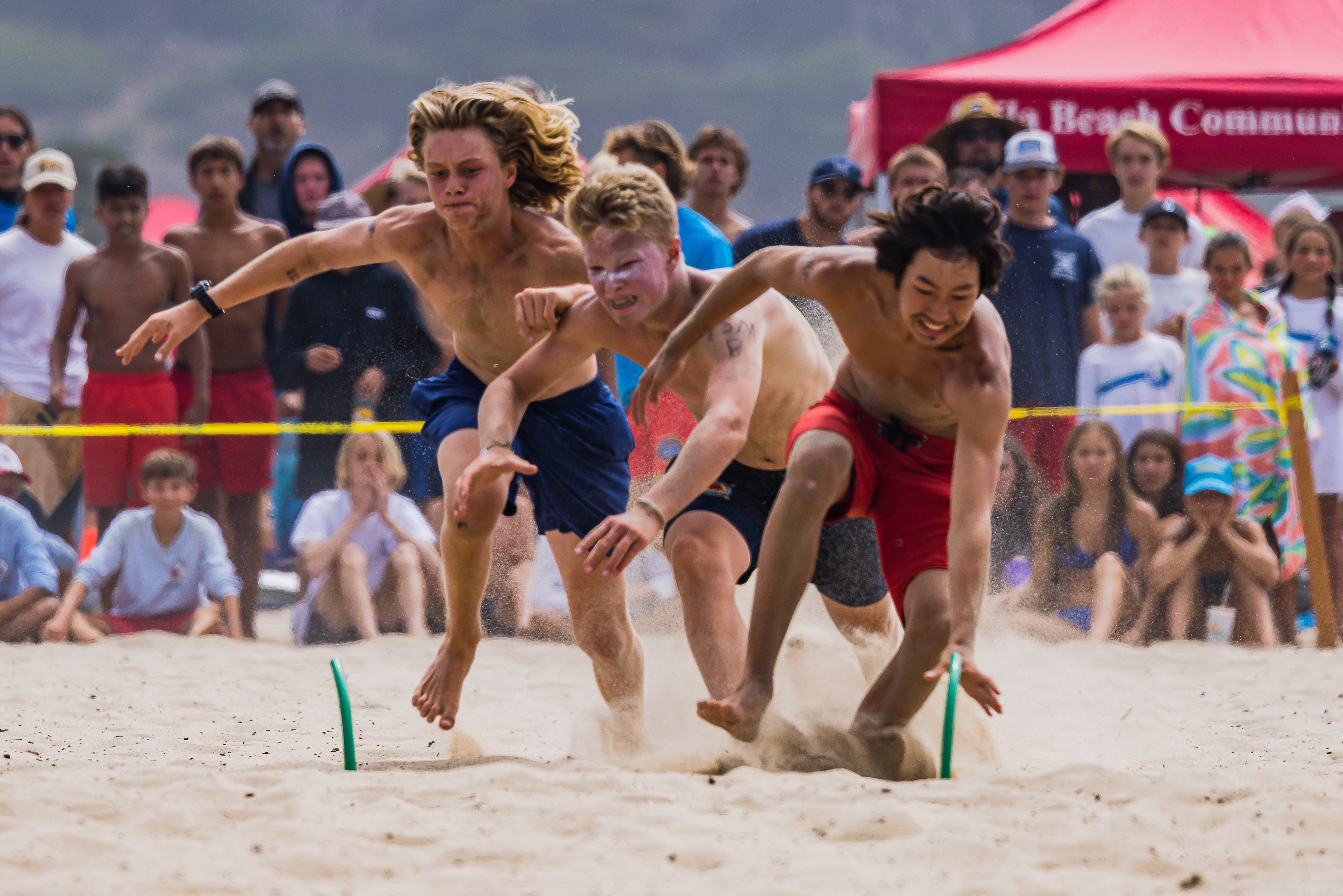
Junior Lifeguards is a dynamic program that goes beyond the traditional summer camp experience by offering opportunities to hone competitive skills and foster teamwork. Central to this are the yearly competitions held along the California coast, where Junior Lifeguards test their abilities against peers, strengthen bonds with their teammates, and represent a nationally ranked program that performs at the highest level.
Participation is optional but is highly encouraged. These competitions set Junior Lifeguards apart by connecting participants to the larger Junior Lifeguard community, where they meet fellow Junior Lifeguards from other programs, forge new friendships, and experience the camaraderie of shared challenges. At the same time, these events provide a platform for our participants to showcase the skills and discipline they’ve developed in the program, highlighting why the Santa Barbara Junior Lifeguard program is recognized as a top competitor in the nation.
Throughout the summer, the program pauses camp activities on designated competition days to allow instructors and Junior Lifeguards to travel and compete. Notable competitions include the Carpinteria Competition and the Fiesta Competition, the latter proudly hosted right here on East Beach. Group events feature instructor-selected teams, while individual events are open to all participants. Advanced competitions, such as Regionals and Nationals, are exclusive to the A, B, and C age groups.
Parents are encouraged to form carpool groups for competitions outside the immediate area, as the program cannot provide transportation to and from events.
Competition dates are included in the 2025 Junior Lifeguards Calendar.
Age Groups
Group A provides the opportunity for action-packed days filled with buoy swims, pier runs, dodgeball matches, flag races, and intense competition training, fostering both water safety skills and teamwork.
Group B provides the opportunity for action-packed days filled with buoy swims, games of water flags, and timed trials to prepare for summer competitions, fostering both water skills and teamwork.
Group C provides a dynamic social space for campers to learn different ocean skills such as bodysurfing and paddleboarding, safety skills like CPR and safe water entries, and the games and skills to prepare for summer competitions.
Group D provides playful beach and ocean games such as dodgeball and paddleboarding, all while receiving a solid foundation in essential ocean skills, putting the youngest campers on their path to becoming seasoned Junior Lifeguards.
Program Requirements
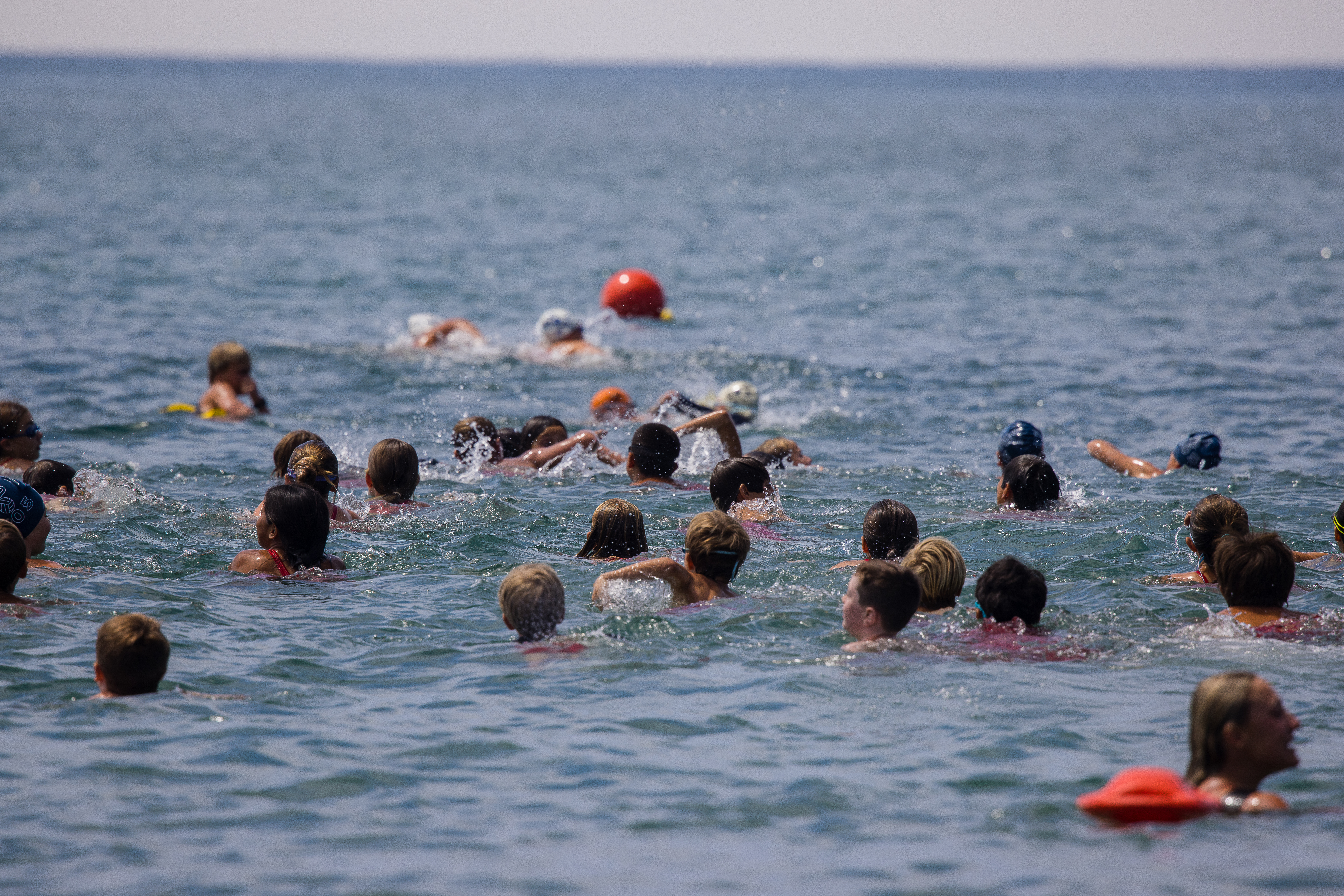
Ocean Swim Test
All participants in the City of Santa Barbara’s Junior Lifeguard Program need to be strong, competent swimmers in the ocean. On Day 1 of each session, all groups will participate in an ocean swim test. This test is untimed and each group will swim a pre-designated course. Participants simply need to stay with the group. The length of the course varies for each age group. Due to the swim test, attendance on the first day of the session is required for all participants new to the program.
Refusing to enter the ocean in a timely manner or falling significantly behind the main group are the two main reasons that participants will not be permitted to continue in the Junior Lifeguard Program. When this situation occurs, a Junior Lifeguard Director will contact the parent / guardian to inform them of the situation. A full refund will be issued in these circumstances and staff will assist in registering for alternative camps for the program weeks if desired.
Swimming Benchmarks
Although ocean swimming vastly differs from pool swimming, we recommend the following timed and untimed benchmarks to test swimming ability, strength, and stamina. Per age group, participants should be able to swim the following distances nonstop, ideally freestyle or breaststroke.
- Groups A & B: 100 meters in 3 minutes or less; 500 meters nonstop untimed
- Group C: 100 meters in 3 minutes or less; 300 meters nonstop untimed
- Group D: 50 meters in 2 minutes or less; 100 meters nonstop untimed
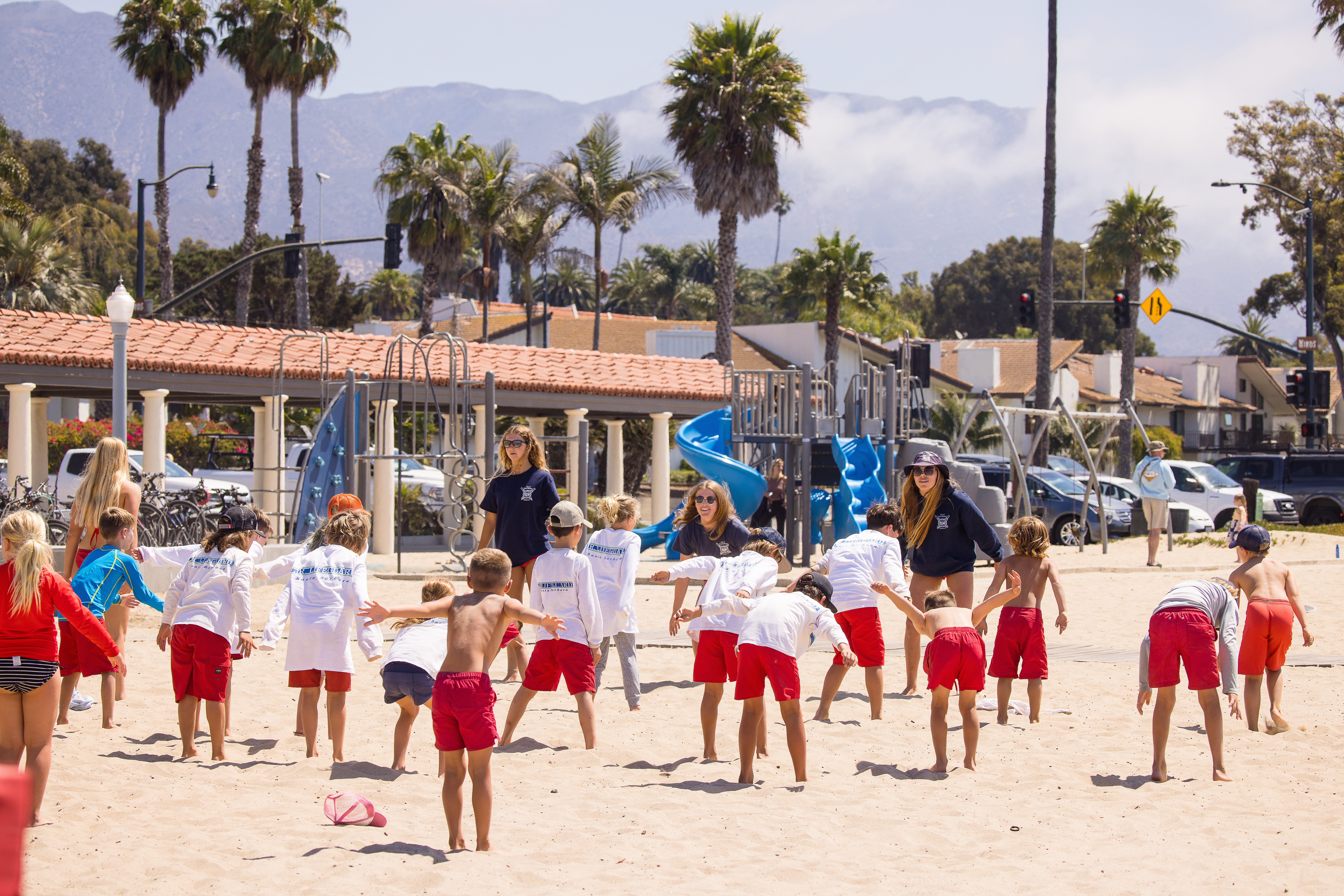
All Junior Lifeguards must report each day wearing a program t-shirt, hat, and solid red swimsuit / swim trunks. Swimsuits must allow for frequent and strenuous exercise.
Program T-Shirt
Participants are required to wear a white program shirt daily. One shirt is included with the cost of the program.
Red Swim Trunks or Swimsuit
Participants are required to wear a red swimsuit or swim trunks daily. This item is not included with the cost of the program. This online store offers a good selection of athletic red swimwear.
Athletic two-piece suits are allowed for girls. Jammers/Speedos/Rashguards can be any color.
Wetsuit Policy
Wetsuits are now permitted. If your child is planning to wear a wetsuit, they must be able to put the wetsuit on and take it off by themselves. Alternatively, they can arrive with it on and remain in it for the entirety of the program. Popular wetsuit styles for the Junior Lifeguard Program are; wetsuit tops, spring suits and short sleeve full suits.
Scholarships
Limited scholarships are available through the Aquatics division. Please reach out to the Aquatics Office at (805) 897-2680.
Frequently Asked Questions
Preparedness comes from familiarity! We recommend testing your child’s ability to enter the ocean once it warms up in the late spring. You will want to make sure they are familiar with swimming freestyle. Time guides can be found under the Swim Test tab above.
If your child is new to the program, no. We will withdraw your child and refund you the full amount of the program if they miss or fail the swim test. If they were previously a Santa Barbara Junior Lifeguard, they will be allowed to miss the test.
A typical day at Junior Lifeguards begins with a dynamic warm-up, before transitioning to a structured workout (either swimming, running, paddling, or a combination). After the morning workout, campers take a break for lunch. And after lunch, the afternoon is filled with learning lifesaving skills and playing various games and activities on the beach!
Campers are divided into age groups and provided with appropriate warm-ups, workouts, and games to fit their skill level. To learn more about our age groups, check out the section above!
Junior Lifeguards should bring a refillable water bottle, a lunch, sunscreen (waterproof SPF 30 or above), a hat or visor, a towel, and extra clothing to protect against the sun and cool temperatures. Specific information regarding Junior Lifeguard uniforms can be found under the Uniform Requirements tab above.
Yes! There are a few special days that are often the highlight of a Junior Lifeguard's summer!
Lifeguard Skill Days: While the Junior Lifeguards gain knowledge of lifeguarding skills throughout the entire summer, these are days where the entire camp specifically focuses on water and first aid skills (rescues, backboarding, bleeding control, CPR, etc.). These days are designed to mimic our actual beach lifeguard training.
Little Buddy Days: On these days campers in the older groups (A and B) will be paired with a little buddy in one of the younger groups (C and D). Buddy pairs will get to know each other through doing structured activities together.
Buoy Masters: This is a fun event where instructors dress up in costume and act out an interactive storyline that requires the Junior Lifeguards to swim buoys in order to “save the beach."
Intrasquad Competitions: These competitions take place between Junior Lifeguards within our agency. Competitors will do a variety of events such as running, swimming, paddling, and relays. These competitions are designed to mimic real lifesaving competitions in a comfortable environment with an emphasis on having fun!
We will modify ocean activities according to the weather conditions. After significant rain, we will keep participants out of the water for 72 hours. During cold days, we will modify ocean time appropriately.
